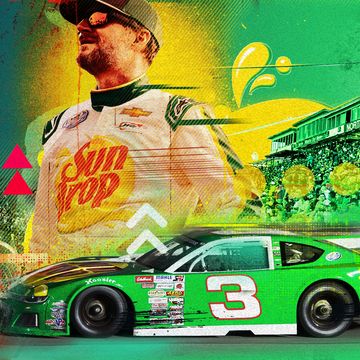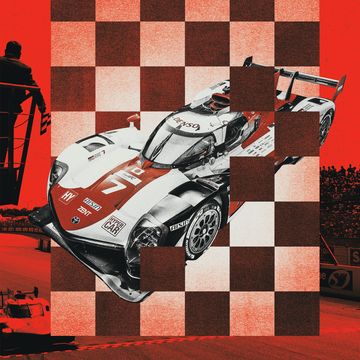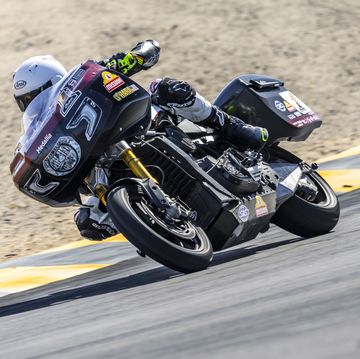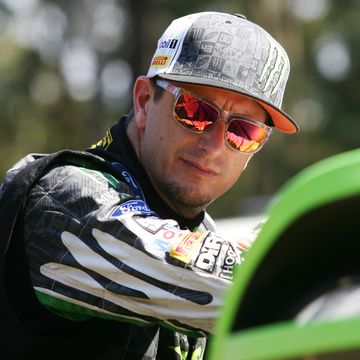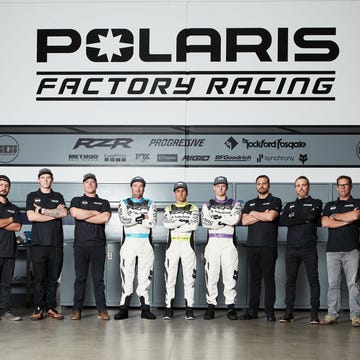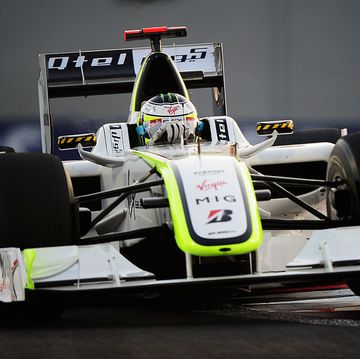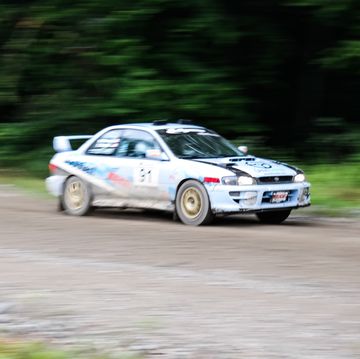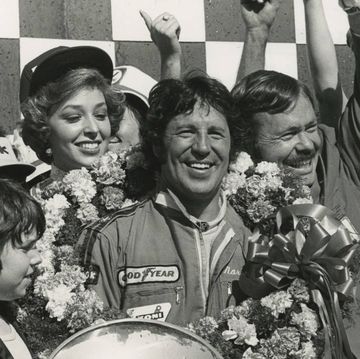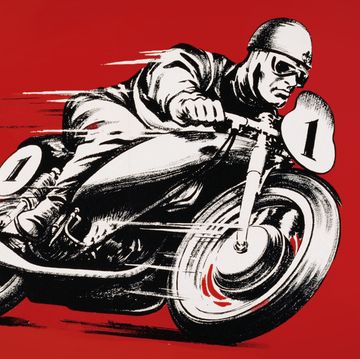It began at the forlorn Texas World Speedway on May 5, 1996. At a time when American sports car sanctioning bodies were bought and sold like penny stocks, Bill Auberlen’s debut as a factory racer for BMW in an E36 M3 should have met an unremarkable end shortly after it began.
As racing series crumbled and manufacturers leapt from crater to crater, Auberlen’s immediate impact with the Bavarian Motor Works ensured he’d survive the times. He’d eventually outlast 10 BMW North America motorsports managers. Bill Clinton served two terms as President—before and after Monica Lewinsky—with Auberlen representing the Roundel. George W. Bush, Barack Obama, and now President Donald Trump have had the pleasure of serving while the peerless Californian has brought delight and victory to BMW.
Auberlen’s unheralded debut for BMW at the unkempt Fort Worth facility, during IMSA’s forgotten days, will be nothing like his 400th start for the brand this weekend at Road Atlanta.
A sweeping conversation spanning his unrivaled career that started in the 1980s, with memories of six championships and 94 wins spread across four decades, provided a fascinating look at one of motor racing’s enduring champions beginning with the factory BMW Prototype Technology Group back in 1996.
“It means a lot of history to be part of such a great team with BMW,” Auberlen told RoadandTrack.com of the achievement. “PTG started my career with BMW. This was a group of guys [where] ‘can’t’ was never in the dictionary. As long as we were in a BMW and those guys could make something happen, we were going to be winning races. And that’s what started my real career with BMW, and that was the start, 400 races later, in so many different amazing machines. I’ve seen everything from prototypes in Europe to prototypes in America to M3s to M1s to McLarens, you name it. I feel like 400 races later, I’m the luckiest guy in the world and I want to get in the car today more than ever before.”
At 48, Auberlen has become a fixture in the sport. Thirty years ago, he was an up-and-coming driver, working from impossibly small budgets, all while trying to make a name for himself and stay off the unemployment line while racing Mazdas in IMSA’s lower rungs.
Necessity pushed Auberlen to fill gaping voids with curiosity; lacking the funding to hire others and pay for outsourced work, he learned to perform his own engine rebuilds, transmission servicing, and assemble cars from a bare chassis as part of his one-man tour de force.
Auberlen’s hands-on approach also produced a character who could offer more to a factory team than basic driving skills. From managerial insights earned while running his own team to chassis setup knowledge to welding and machining, Auberlen’s value as a race-winning GT pilot was only part of what piqued PTG’s interest by the mid-1990s.
Racing in the same IMSA class–as a direct threat to its BMW program, Auberlen made the bold move to offer a surrender of sorts by parking his underfunded Mazda if a seat in one of PTG’s M3s was provided in kind. It was a pivotal gamble.
“Something was going to ignite, but I didn’t know how,” he said of the ballsy ploy. “I was going broke. I was in debt, and something needed to happen. I called [PTG’s] Joe Weidensall, and I said ‘listen, I know you guys are struggling,’ and I tried a new technique: ‘I’ll leave my Mazda behind, you guys put me in a car, and you’re going to win your first race.’
“So then I get a call back from [PTG owner] Tom Milner who basically says, ‘OK, how much?’ And I [thought], ‘whoa, you can get paid in racing? I had no idea.’ I think it was $2500 and expenses. I couldn’t believe it.”
Auberlen’s dream scenario to become a factory driver had finally arrived. Turning up for his first race with BMW, his place within the driver hierarchy was quickly revealed.
“I get to Texas World Speedway and I’m so excited that I look at the Valvoline [PTG BMW M3] car and the [sister] First Union car,” he said. “These were iconic cars. I go over and look for my name and it’s not on that one, so I go to the other, and it’s not on that one. And I’m like ‘hold on…’
“And they pull out a customer car from Matt Cohen. He was just getting into racing, and they unroll a car out of the truck and there’s my name on that car. So, I’m not in the factory [car]; I’m in the kid’s car.
“Turned out the car was very good, but it had a 3-liter engine; didn’t have the 3.2-liter engine. The new factory cars had the 3.2-liter engines; down the straights at Texas World, [we] stood no chance.”
Relegated to a customer car with a weak engine, Auberlen made another bold move that would either solve the problem or ensure his tenure with BMW started and ended the same weekend.
“I asked Matt Cohen—we’re gonna get killed if we don’t get rid of this motor—I said, ‘what happens if this motor blows up?’” Auberlen confessed. “He said, ‘I don’t know?’ I said, ‘do they have another one?’ He said, ‘I guess they’d have to give me one of theirs.’ I said, ‘you have to get rid of this motor.’ And I’ve never actually done this in my life, and he goes, ‘we’ll how do you do it?’ I said, ‘shove it in every wrong gear you can.’ Poof. The 3.2-liter motor goes in. They don’t know [what we did]…
“Off we go, we’re cooking with fire. Me and the car are a perfect match. The diff broke in qualifying, so we started last, we passed the whole field, led the race. This in the days when drivers could jump from car to car, and behind the scenes, they’re trying to convince Matt Cohen not to race. I’m leading, come in for my pit stop, and [veteran pro] Pete Halsmer gets in, and not Matt Cohen. And he’s on his way to victory, but the diff breaks, and we don’t win.”
Despite the letdown, Auberlen’s immediate pace, thanks to the crafty 3.0-liter ventilation plan, and a few wins in that partial debut season moved him into a position where he was the clear choice for a seat in one of the factory cars in 1997.
Looking back, the rapid building of Auberlen’s legend within BMW came as a direct result of the one-man-gang routine he perfected.
“Another thing that I think really helped me out was the fact that I came out of knowing every component on the car, knowing how to build it intimately, and understanding it,” he said. “So I’d be in the car, and I’d have such mechanical sympathy [from] building parts, that the instant I heard a noise or felt something, I knew exactly where to go, how to tell my engineers and we could move very quickly within fine-tuning suspension or whatever we had to do. Those things really worked to my advantage.”
Like American presidents and BMWNA motorsports managers, Auberlen has been the brand’s rock while time has swept dozens of teammates in and out of the program. As BMW’s universal tool, versatility is the unique identifier that made 400 races possible.
“I was mapping engines, myself,” he continued. “When it came to traction control routines, I was writing them, early on. I already knew how to do it. Later on in my career, [former co-driver] Joey Hand came along and I said, ‘hey Joey, you gotta have a specialty that separates you from everybody else. His became dampers. He became the shock guy and it was something he always took precedent over someone else.”
Auberlen, the complete package, remains the only driver of his kind within the BMW family and, critically, among his rivals.
“My thing was understanding the mechanical aspects of the car as good as any one of my mechanics, or my engineers, my electronic engineers, I tried to understand it really well, and that connection has always been able to just eke me one little step ahead of a lot of other people,” he said.
“When their game is just driving, I actually knew how I could go back to something, manipulate it, get more out of it. I’ve been at the Yokohama tire factory [to learn] how a tire is built, how the cords [work], everything that was on the ground; you name it; braking compounds, from every aspect of that car, and it’s just trying to extract every tenth you can in a different way.”
Through BMW, Auberlen was introduced to the great international sports car races as the 2000s drew near. The 24 Hours of Le Mans beckoned in 1998 with a BMW V12-powered McLaren F1 GTR where he and teammates Steve O’Rourke and Tim Sugden claimed fourth overall. As a frequent occupant of F1s at BMW vintage events, the glorious song produced by the mountain-size 6.0-liter mill has become a constant soundtrack in his life. Ever the professional, Auberlen isn’t afraid to dip into the same well of fandom that supports the sport.
“The first time I drove the McLaren longtail…imagine, this is a V12 that sounds amazing,” he said. “I got the opportunity to do Le Mans, finally, this whole thing came together, I need some experience, well I guess I’m going to do it a McLaren longtail…it’s incredible.
“I go barreling down Mulsanne, it’s nighttime, and just I remember this experience: I’m going down pit lane, you’re on the speed limiter but you have hot tires, so the moment you release [the limiter] you’re full-tilt. People are hanging over the pit exit wall, I release the button, and off I go. I thought, ‘nothing sounds cooler than this’ and I’m grabbing gears.
“Then I go down the Mulsanne into Indianapolis [corner] and you’re downshifting and you can see the reflection of the flames off the barriers and stuff, and you know the brakes are glowing and you hear this motor, and I go, ‘I swear to God, when I drive this car, I am better looking, I’m taller, and I have more hair. I am way cooler in this car!’”
Soon after the event, and with a rule change coming that would spell the end for F1 GTRs at Le Mans, Auberlen recalls seeing the car he’d just raced turn up for sale. Does he have any regrets in racing? The answer is an eight-digit yes.
“I’ll give you an example of a mistake in racing,” he said. “All of a sudden it shows up [in a magazine] a few months later. I think it was like $275,000, and I go, ‘who would buy this car? This car is useless. Now I’m ready to kill myself. Now what are they, $15 or $16 million for the longtail? $275,000…’nobody would buy this car…’ Don’t ever come to me for financial advice.”
Two wins this season for BMW Team RLL in IMSA’s fiercely contested GT Le Mans factory battleground serve as a reminder that time has not robbed of his natural speed or competitive fire. Teamed with England’s Alexander Sims, who was coming off celebrating his eighth birthday when Auberlen suited up for BMW at Texas, the duo is the latest in a long tradition of winning combos led by the brand’s elder statesman.
The concept of Auberlen racing for BMW well past the age of 50 should be a formality, but he doesn’t approach the future with any expectations or feelings he’s owed by the manufacturer. Earning his seat on an annual basis is a part of the challenge he genuinely enjoys.
“Something that a lot of people don’t let people into: there’s something about drivers in this paddock, in the entire world. Every single year, unless you have a contract that goes into next year, this is your last year until you make it happen for next year,” he said.
“It’s this never-ending struggle. No matter how secure you think you are, you have to go back to the negotiating table, re-do it again. You could be out the year your contract ends. It’s an unsettling feeling. To be with BMW since 1996, this long, means something between us really clicked. But every year, going from last year to this year, and this year to next year, you’re always going to have to renegotiate your contract and try to get a few more years out of it.”
There’s a formula to reaching 400 races and beyond with a single brand, and Auberlen has it.
“Stay fast. The bottom line: you stay fast, win races, you don’t make a mess out of things, and you market well, then you’re an asset to the company,” he proclaimed. “The minute you become a liability to the brand, everybody’s going to be gone. I don’t know if the loyalty extends past that. You have to be a good personality for the company and bring value to the brand.”
“Twenty-one years later, still winning races in GT Le Mans against kids that are the best, most refined drivers in the world. I’m still going.”
Enjoy the full conversation with Auberlen below.










